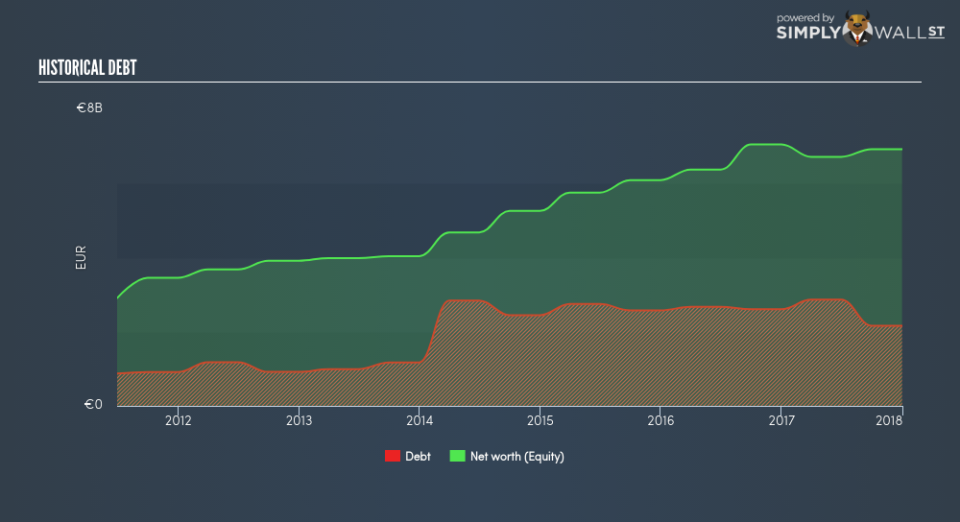What does Essilor International Société Anonyme’s (EPA:EI) Balance Sheet Tell Us About Its Future?

Investors pursuing a solid, dependable stock investment can often be led to Essilor International Société Anonyme (EPA:EI), a large-cap worth €26.02b. Big corporations are much sought after by risk-averse investors who find diversified revenue streams and strong capital returns attractive. But, the key to their continued success lies in its financial health. Let’s take a look at Essilor International Société Anonyme’s leverage and assess its financial strength to get an idea of their ability to fund strategic acquisitions and grow through cyclical pressures. Note that this information is centred entirely on financial health and is a high-level overview, so I encourage you to look further into EI here. See our latest analysis for Essilor International Société Anonyme
How much cash does EI generate through its operations?
Over the past year, EI has reduced its debt from €2.61b to €2.17b , which comprises of short- and long-term debt. With this debt repayment, the current cash and short-term investment levels stands at €484.00m for investing into the business. Additionally, EI has produced cash from operations of €1.23b during the same period of time, leading to an operating cash to total debt ratio of 56.95%, meaning that EI’s operating cash is sufficient to cover its debt. This ratio can also be a sign of operational efficiency as an alternative to return on assets. In EI’s case, it is able to generate 0.57x cash from its debt capital.
Can EI meet its short-term obligations with the cash in hand?
Looking at EI’s most recent €2.95b liabilities, it appears that the company has maintained a safe level of current assets to meet its obligations, with the current ratio last standing at 1.18x. Generally, for Medical Equipment companies, this is a reasonable ratio since there is a bit of a cash buffer without leaving too much capital in a low-return environment.
Can EI service its debt comfortably?
With a debt-to-equity ratio of 31.26%, EI’s debt level may be seen as prudent. EI is not taking on too much debt commitment, which can be restrictive and risky for equity-holders. We can test if EI’s debt levels are sustainable by measuring interest payments against earnings of a company. Net interest should be covered by earnings before interest and tax (EBIT) by at least three times to be safe. In EI’s case, the ratio of 24.5x suggests that interest is amply covered. High interest coverage is seen as a responsible and safe practice, which highlights why most investors believe large-caps such as EI is a safe investment.
Next Steps:
EI’s high cash coverage and appropriate debt levels indicate its ability to utilise its borrowings efficiently in order to generate ample cash flow. In addition to this, the company exhibits proper management of current assets and upcoming liabilities. Keep in mind I haven’t considered other factors such as how EI has been performing in the past. I suggest you continue to research Essilor International Société Anonyme to get a more holistic view of the stock by looking at:
Future Outlook: What are well-informed industry analysts predicting for EI’s future growth? Take a look at our free research report of analyst consensus for EI’s outlook.
Valuation: What is EI worth today? Is the stock undervalued, even when its growth outlook is factored into its intrinsic value? The intrinsic value infographic in our free research report helps visualize whether EI is currently mispriced by the market.
Other High-Performing Stocks: Are there other stocks that provide better prospects with proven track records? Explore our free list of these great stocks here.
To help readers see pass the short term volatility of the financial market, we aim to bring you a long-term focused research analysis purely driven by fundamental data. Note that our analysis does not factor in the latest price sensitive company announcements.
The author is an independent contributor and at the time of publication had no position in the stocks mentioned.

